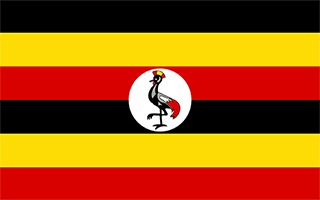Facts and Data
Webpages:
Official Unesco Page
Protectedplanet.net
Basis Data:
Unesco World heritage since: 1994
Size of heritage: 99,600 ha
Coordinates:
Longitude: 29,924°
Latitude: 0,224°
Summary
The Rwenzori Mountains National Park covers nearly 100,000 ha in western Uganda and comprises the main part of the Rwenzori mountain chain, which includes Africa's third highest peak (Mount Margherita: 5,109 m). The region's glaciers, waterfalls and lakes make it one of Africa's most beautiful alpine areas. The park has many natural habitats of endangered species and a rich and unusual flora comprising, among other species, the giant heather.
Location on Map
Show bigger map on Openstreetmap
Introduction
Rwenzori Mountains National Park is a UNESCO World Heritage site located in the districts of Kabarole, Kasese, and Bundibugyo in Uganda. This magnificent park is renowned for its stunning mountain range, which is often referred to as the "Mountains of the Moon." With its rich biodiversity, unique flora and fauna, and breathtaking landscapes, the Rwenzori Mountains National Park is a true gem of Uganda.
History
The history of the Rwenzori Mountains National Park dates back to the early 20th century when it was first explored by European explorers. In 1906, the Duke of Abruzzi led an Italian expedition to the region, making significant discoveries and mapping the area. This expedition brought international attention to the beauty and uniqueness of the Rwenzori Mountains.
In 1994, the Rwenzori Mountains National Park was designated as a UNESCO World Heritage site due to its outstanding natural value. The park's diverse ecosystems, including glaciers, alpine meadows, and tropical rainforests, make it a haven for biodiversity and a crucial water catchment area for the surrounding communities.
Current State
The Rwenzori Mountains National Park is currently managed by the Uganda Wildlife Authority (UWA) in collaboration with local communities. Efforts have been made to preserve and protect the park's natural and cultural heritage while promoting sustainable tourism.
The park offers a range of activities for visitors, including hiking and mountaineering. The most popular trek is the Rwenzori Mountaineering Circuit, which takes hikers through various ecosystems and offers breathtaking views of the surrounding landscapes. The park also provides opportunities for bird watching, with over 217 bird species recorded, including the Rwenzori turaco and the handsome francolin.
The flora of the Rwenzori Mountains National Park is incredibly diverse, with over 1,000 plant species, including several endemic species. The park is famous for its giant lobelias and groundsels, which can reach impressive heights. The lower slopes of the mountains are covered in lush tropical rainforests, home to various primates, such as chimpanzees and colobus monkeys.
However, the park faces several challenges, including encroachment by local communities, illegal logging, and climate change. These threats put pressure on the delicate ecosystems and biodiversity of the park. Efforts are being made to address these issues through community engagement, education, and sustainable development initiatives.
Conclusion
The Rwenzori Mountains National Park in Uganda is a UNESCO World Heritage site of exceptional natural beauty and biodiversity. Its towering mountains, diverse ecosystems, and unique flora and fauna make it a must-visit destination for nature enthusiasts and adventure seekers. While facing challenges, the park continues to be a symbol of Uganda's commitment to conservation and sustainable tourism. By preserving and protecting this remarkable site, we can ensure that future generations can experience the awe-inspiring beauty of the Rwenzori Mountains.
